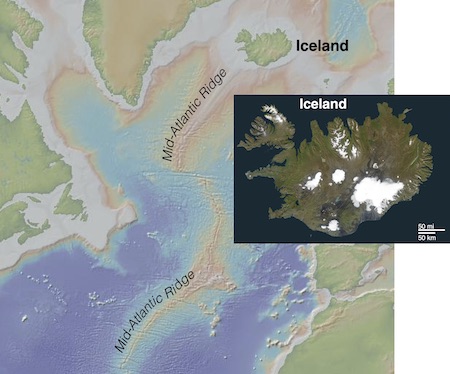

You will now begin your virtual exploration of one of the largest lava flow eruptions in recorded history: the 1783 Laki fissure event in southern Iceland.
First, let's consider the unique country of Iceland in the North Atlantic. With a population of 300,000, its origin has been purely volcanic!
Iceland sits on top of the Mid-Atlantic Ridge, a vast volcanic mountain chain that is entirely submerged except in Iceland.

The Mid-Atlantic Ridge marks the plate boundary between the North American plate to the west, and the Eurasian plate to the east. They move apart in this region at a rate of about 2 cm per year.
Iceland derives its volcanism in part from the spreading of the Mid-Atlantic Ridge, which is a divergent plate boundary where the North American and Eurasian plates move apart, and in part from a hot spot located in the mantle beneath central Iceland.
The combined volcanic production of the hot spot and the spreading ridge together is much higher than on normal mid-ocean ridges without hot spots, and as a result Iceland has risen well above sea level. Iceland is the only place on the global mid-ocean ridge where active plate spreading takes place above the water.
Because of its northerly location, about one tenth of this entirely volcanic country is covered by glaciers.
Most of the glaciers sit on top of active volcanoes.